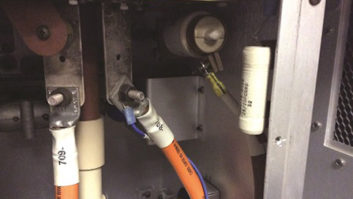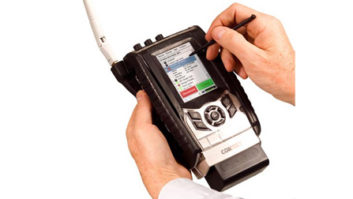Maximized data
Jun 1, 2005 12:00 PM, By Kevin McNamara
In one respect, the consolidation of facilities we have witnessed over the past 10 years has empowered station engineers to implement some new technologies in a much quicker time frame than it would have otherwise. Consolidation created a need to implement technology; after all, wasn’t this about �maximizing resources?� And what better business to leverage technology than one that could conceivably operate entirely over a common infrastructure? At the time, no one really understood all the benefits that would come from these new LAN-based applications and the protocols that were still in the early stages of development. Meanwhile, 802.11, VPN and VoIP were only discussion topics.
The concept of a local area network (LAN) has evolved from a means to share information and files within a single facility to connecting anywhere in the world. The basis of the Internet has been around since the 1940s, primarily being used by the military and academic facilities, but it formed the common backbone to connect users on a global scale. The evolution of the Internet Protocol and Domain Name Services allowed specific addresses for the end user and thus the proliferation of universal e-mail and the Universal Resource Locator (URL), which permitted the association of regular names (for example, www.beradio.com) to the assigned IP addresses.
Data distribution apps

Even the smallest stations are able to leverage data technology in their facilities.
In the old days, we had individual telco lines delivered to the station. Some served the daily business functions, some had a special exchange and were designated as listener call-in lines; in the larger markets, these were also referred to as choke exchanges, which actively limited or choked the amount of calls to the telco switch serving the station to protect the switch from shutting down during times of extremely high traffic, such as when a station runs a contest. You may also remember when equalized toll lines might have been necessary to get program material to and from the station, such as studio-to-transmitter and remotes. Although more limited, some stations also had lines that were used to support off-premise telephone services.
These are four separate applications that constituted a large portion of a station’s operating budget, which can now be entirely handled by a single, properly designed data network. In some cases, the monthly recurring costs of maintaining separate telco lines can be completely eliminated through the use of company owned microwave or fiber facilities with the exception of costs associated with connecting to the public switched network. Even the costs associated with maintaining leased T-1 or T-3 lines has dropped dramatically over the past 10 years, particularly as the local Bell Operating Companies are moving towards IP-based switching.
Networks can handle virtually anything that can be encoded into a digital format; obviously this includes audio program material, but let’s not forget data acquisition and control functions, such as those required in the operation of a remote transmitter or, perhaps, to allow on-air personnel to control studio functions from a remote location for something as simple as an off-site event or, more importantly, for disaster recovery operations.
VoIP
Voice Over Internet Protocol is beginning to emerge as a viable option to traditional telephone service. The proliferation of high-speed broadband connections to homes and offices has enabled several companies, including local telephone companies, to offer the services to individuals and businesses. The theory is straightforward: voice is digitized into IP packets and subsequently routed, either internally to other phones through a dedicated VoIP server or to a local carrier that provides access to the public switched network; in other words, they provide the dial tone. Because the service uses the Internet, there is virtually no limitation as to the distance or amount of remote facilities that can be interconnected. VoIP-enabled facilities might also be able to give employees access to the company phone system from any place that has a broadband connection, i.e. home, hotel or a remote event.
The cost to implement VoIP is rapidly falling, combined with the potential elimination or reduction of long distance charges, making this worth considering.
VPN
The Virtual Private Network permits remote users to securely access one or more company servers externally as if they were connected directly to the internal network. VPN takes advantage of tunneling where non-secure IP data can be encapsulated into a secure IP data stream. With VPN, it is possible to move an entire studio to any location with a broadband connection, assuming that the studio is equipped with a digital audio storage/play system and digitally enabled console. Someone just needs to devise a portable control surface that could be plugged into a laptop and permit remote control of the console.
By implementing VoIP and VPN, it is possible to move the primary operations of a station to anywhere a broadband connection is available. In case of an emergency, wouldn’t it be nice to have your servers mirrored in another offsite location?
SAN
The Storage Area Network is the last line of defense in hardening any network. Hardening has several meanings, including sufficient battery and ac generator backup, as well as using a ring approach to connect various resources. This approach would give the best diversity in the event of a loss of one leg of the data path. To carry this approach one step further, implement a SAN to make data available over multiple servers, preferably servers located in a different physical location. SANs can be interconnected by several protocols, including IP, which give users the flexibility to extend disk backup to anywhere there is access to sufficiently large data pipes. In the case of a broadcast facility, this remote location could include a transmitter site or another company-owned facility in another market.
Wi-fi
Imagine that all of these services can operate without any cables. Many stations are taking advantage of deploying digital microwave systems to connect studios and transmitter sites, but the 802.XX protocol is making it possible to connect virtually any network device wirelessly. The 802.11a standard permitted a max speed of 54Mb/s, but was limited in distance due to its operation at the 5.7GHz frequency range. The 802.11b spec provided a lower overall speed, 11Mb/s, but better range due to its 2.4GHz range. The current spec, 802.11g, provides all the speed and benefits of both 802.11a and b.
An enhanced specification called WiMAX (802.16) will be available by 2007. WiMAX is intended to be a long-range, high-speed wireless protocol intended to be deployed in a �cell� configuration similar to conventional wireless telephone networks and can cover an area from 3m to 10m with data rates of 40Mb/s per channel.
McNamara is president of Applied Wireless, Elkins Park, PA.











